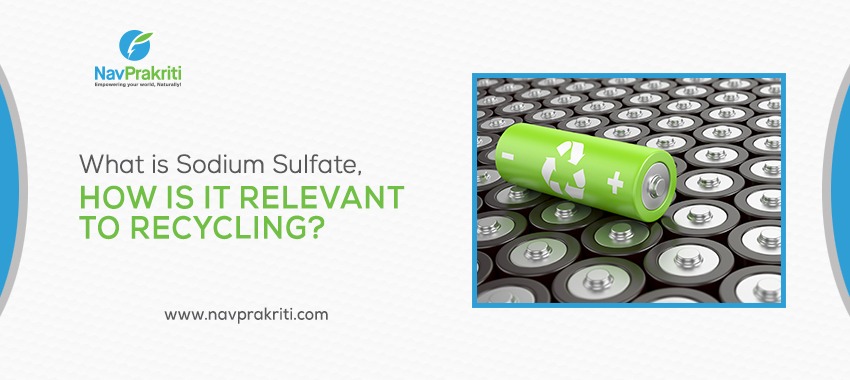How Lithium ion Battery Recycling Impacts The Market
 >
>
The recycling of Lithium-ion batteries is revolutionizing the global energy sector, with NavPrakriti – Eastern India’s First battery recycling company in India leading the way. As the demand for electric vehicles (EVs), renewable energy storage, and sustainable energy solutions grows, efficient battery recycling is becoming essential. This transformation is driving a circular economy, reducing environmental impact, and stabilizing the market supply of critical materials. By the 2030s, battery recycling is expected to play a central role in shaping clean energy markets and industrial practices.
Market Impact and Growth
Lithium-ion battery recycling is set to reshape the market by ensuring a steady supply of essential materials such as Lithium, Cobalt, and Nickel. By recovering these metals, companies like NavPrakriti – Eastern India’s First battery recycling company in India are reducing dependence on mining, lowering costs, and mitigating environmental risks. The market is expected to reach $35 billion by 2031, driven by technological advancements and government incentives promoting sustainability.
Extended Producer Responsibility (EPR) regulations are compelling manufacturers to take ownership of end-of-life battery disposal. As awareness grows, the demand for efficient recycling solutions is surging, positioning NavPrakriti – Eastern India’s First battery recycling company in India as a key player in this evolving market.
Price Dynamics and Emerging Business Models
Influencing Factors on Price Dynamics
Recycling significantly impacts price stability by addressing supply shortages. A study using the Vector Error Correction Model (VECM) found that EV demand directly influences cobalt and Lithium prices. While short-term fluctuations occur, the long-term trend suggests an inverse relationship between Lithium, Nickel, and Cobalt prices, reflecting a dynamic market adjustment.
Economic Impact of Recycling
Battery recycling helps stabilize raw material costs and create new economic opportunities. India’s rapidly growing EV market presents a lucrative opportunity for companies like NavPrakriti – Eastern India’s First battery recycling company in India, which is pioneering sustainable solutions while generating employment and fostering economic growth.
Emerging Business Models
- Tolling Model: Recycling companies process batteries for third parties, charging fees for their services while returning valuable materials.
- Closed-Loop Model: Recyclers retain materials, minimizing market risks for manufacturers.
- Collection Centers & Refurbishment: Startups and investors are developing innovative models, including battery collection networks and advanced recovery plants.
- Battery-as-a-Service & Lease Programs: These models are gaining traction as businesses seek sustainable and cost-effective energy storage solutions.
Future Projections and Sustainability
The Lithium-ion battery recycling market is projected to grow from $4.5 billion in 2024 to $23.21 billion by 2032, with a CAGR of 22.75%. Governments worldwide are pushing for greener policies, and initiatives like Europe’s “Fit for 55,” India’s Battery Waste Management Rules, and the U.S. Inflation Reduction Act are accelerating the transition to sustainable energy solutions. NavPrakriti – Eastern India’s First battery recycling company in India is playing a crucial role in this transformation by championing eco-friendly recycling practices and driving industry innovation.
Strategies for Market Collaboration
Cross-Sector Partnerships
Collaboration across industries enhances efficiency and promotes sustainable practices. Companies, policymakers, and researchers must work together to optimize recycling processes and maximize resource recovery.
Research and Development (R&D) Alliances
Innovation in battery recycling is crucial. Joint R&D efforts funded by government grants and industry partnerships can lead to groundbreaking advancements in battery disassembly, material separation, and purification.
Standardization and Certification
Establishing recycling standards ensures the safety and quality of recovered materials. Organizations such as the Recycling Materials Association (ReMA) and India’s Council of Scientific & Industrial Research (CISR) are working to implement guidelines that enhance recycling efficiency and market credibility.
Policy Advocacy and Community Engagement
Policy advocacy is essential for fostering a regulatory environment that supports battery recycling. Additionally, consumer awareness campaigns can drive participation in recycling programs, contributing to sustainability goals.
Conclusion
The future of Lithium-ion battery recycling depends on collaboration, innovation, and regulatory support. Companies like NavPrakriti – Eastern India’s First battery recycling company in India are leading the charge in transforming the market, ensuring sustainability, and driving economic growth. By embracing cutting-edge recycling technologies and fostering cross-industry partnerships, the global energy sector can move toward a greener, more circular economy.
As the world transitions to sustainable energy solutions, Lithium-ion battery recycling will remain a cornerstone in reducing environmental impact, stabilizing market prices, and promoting a cleaner future for all.









Leave a Reply